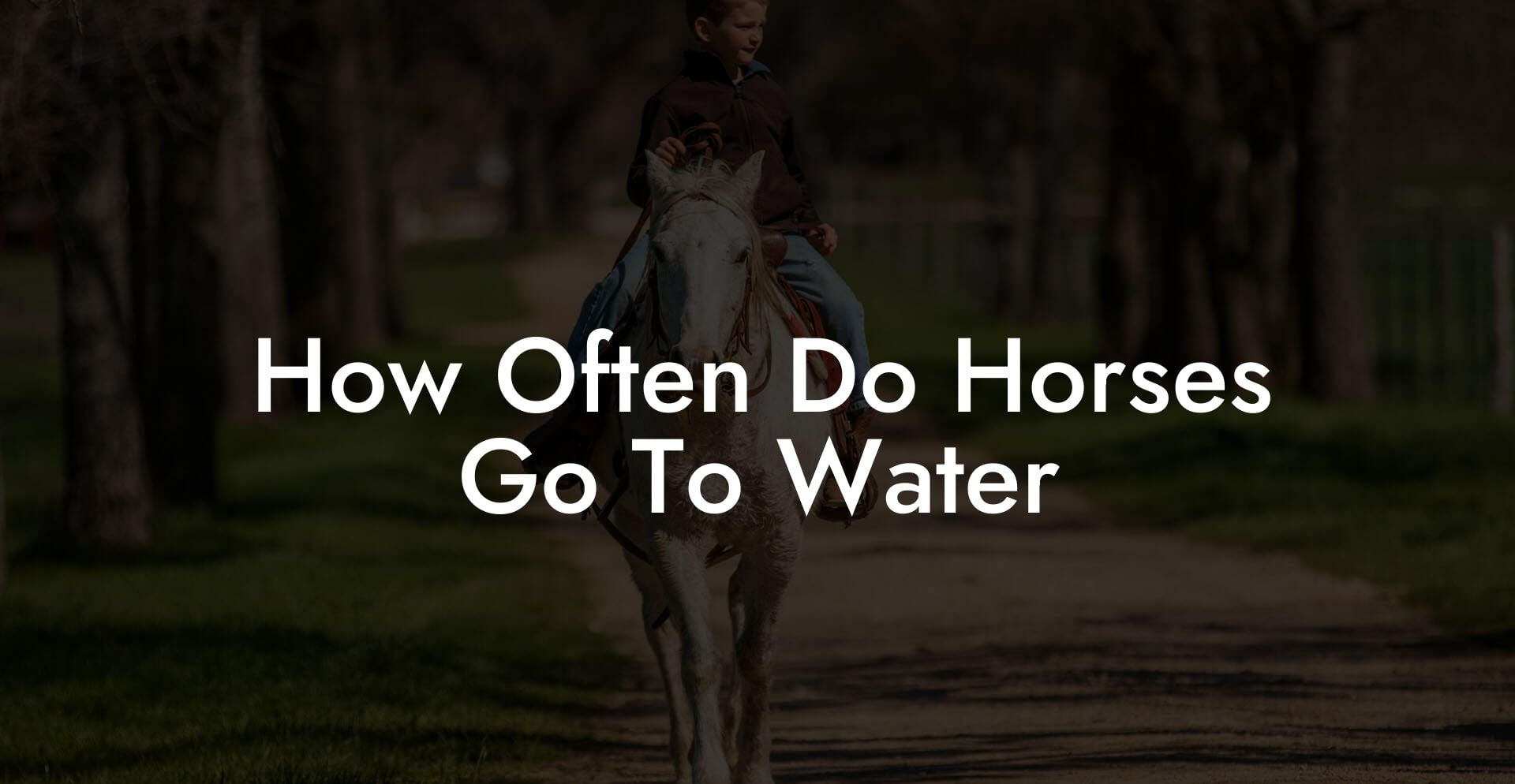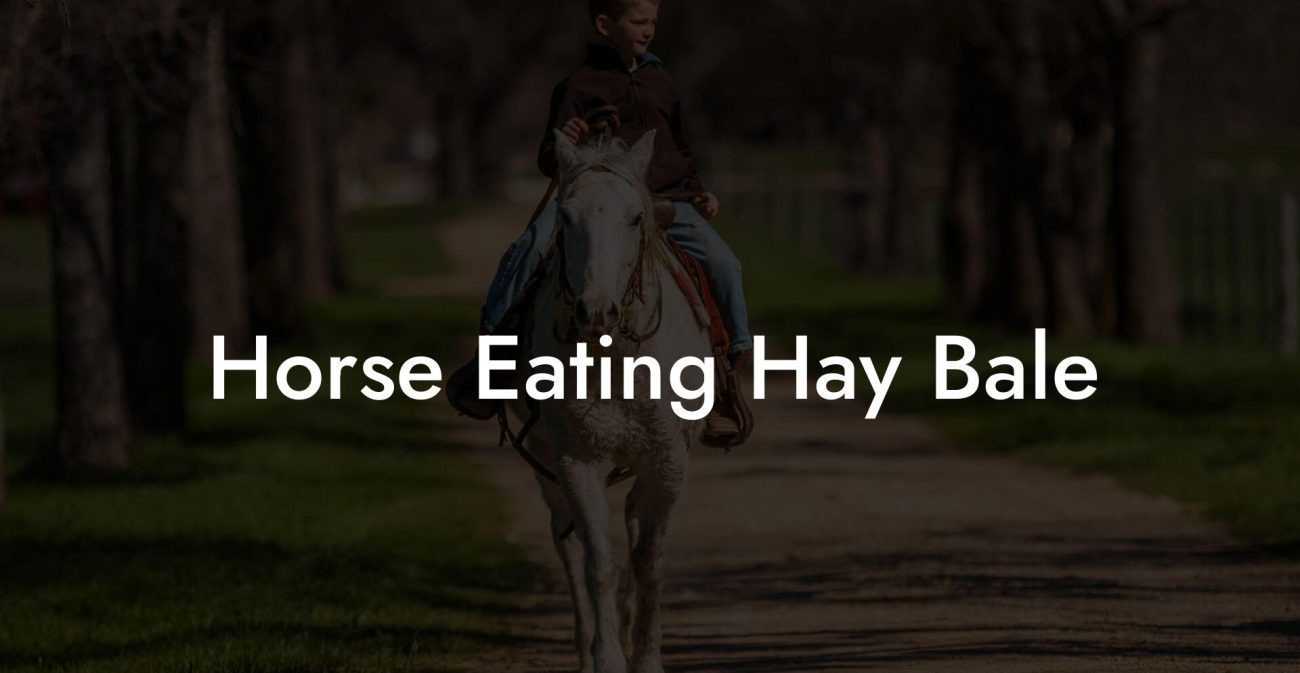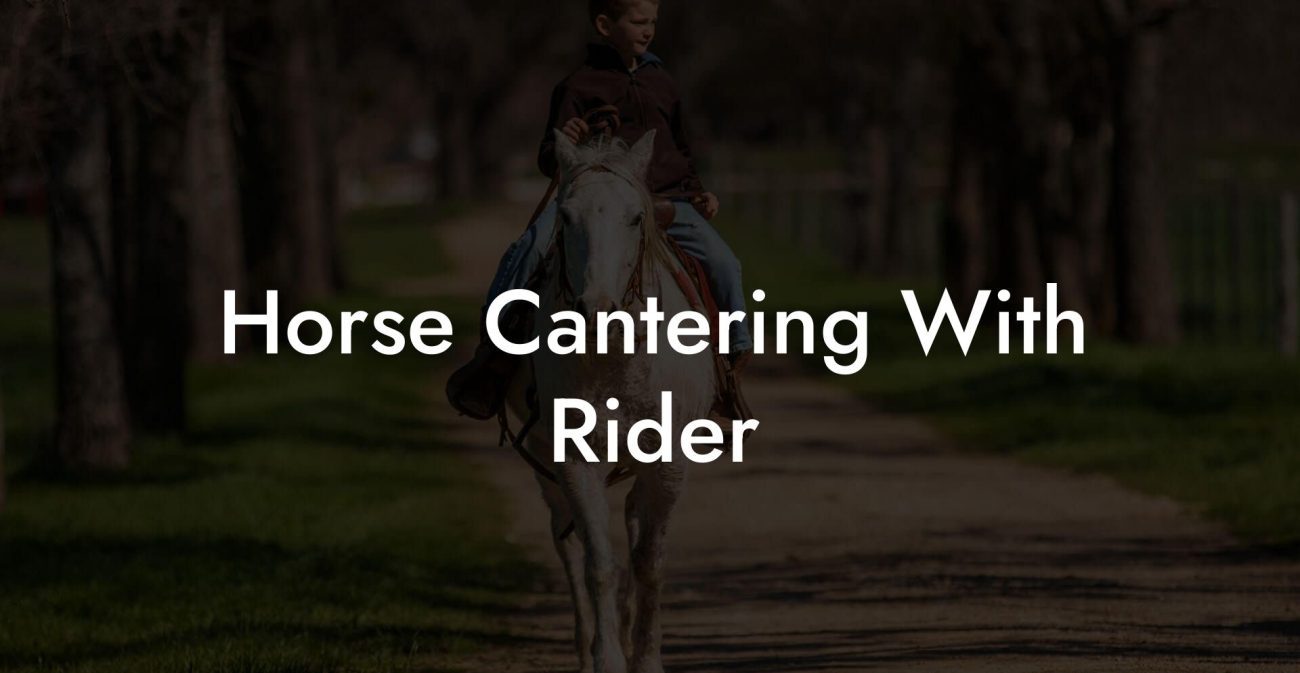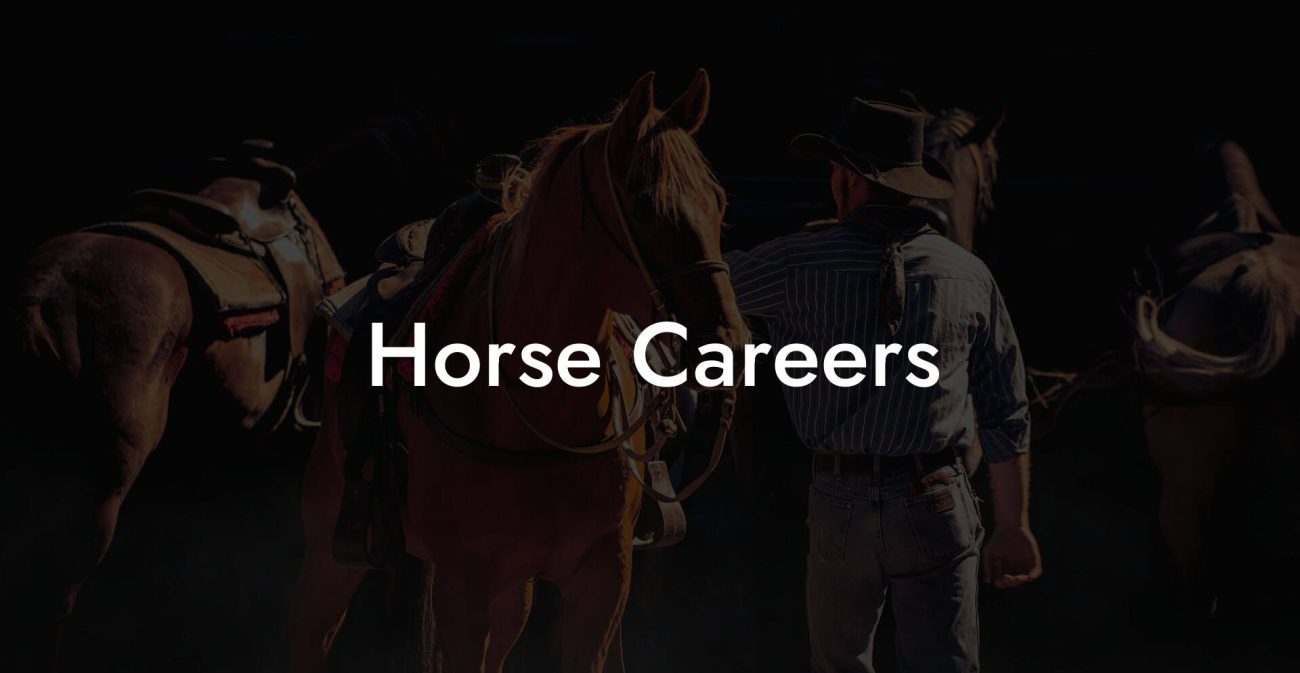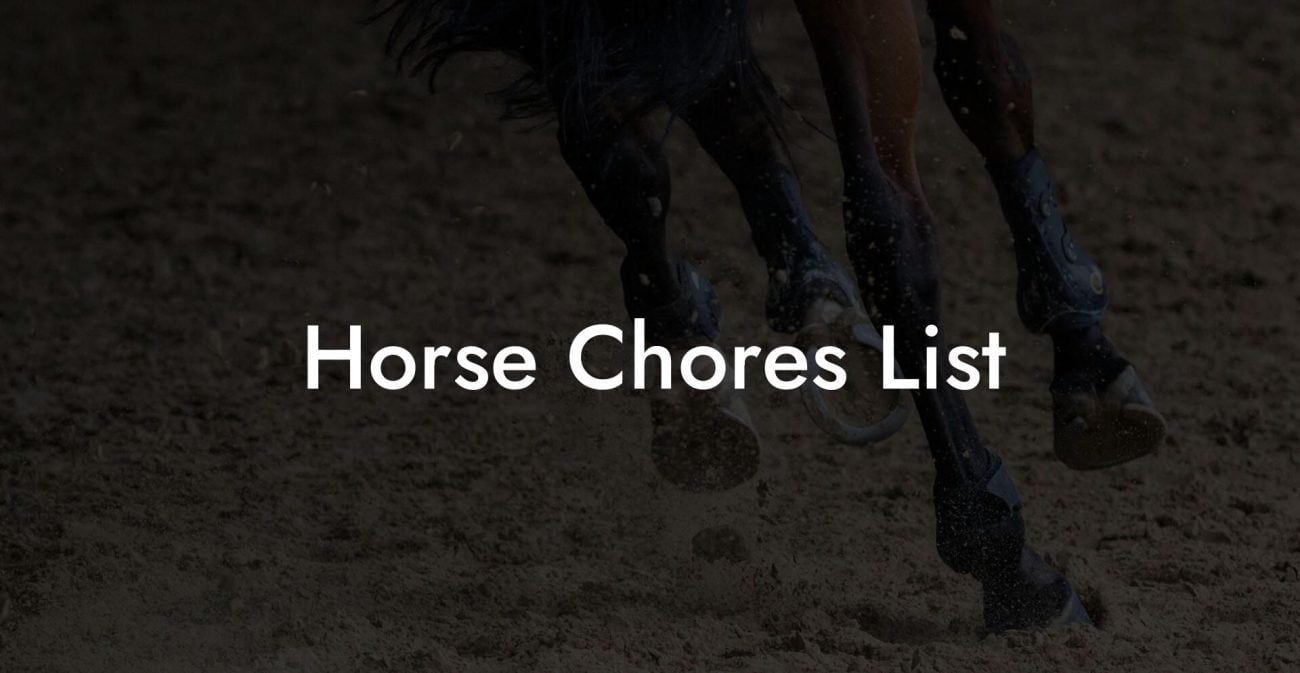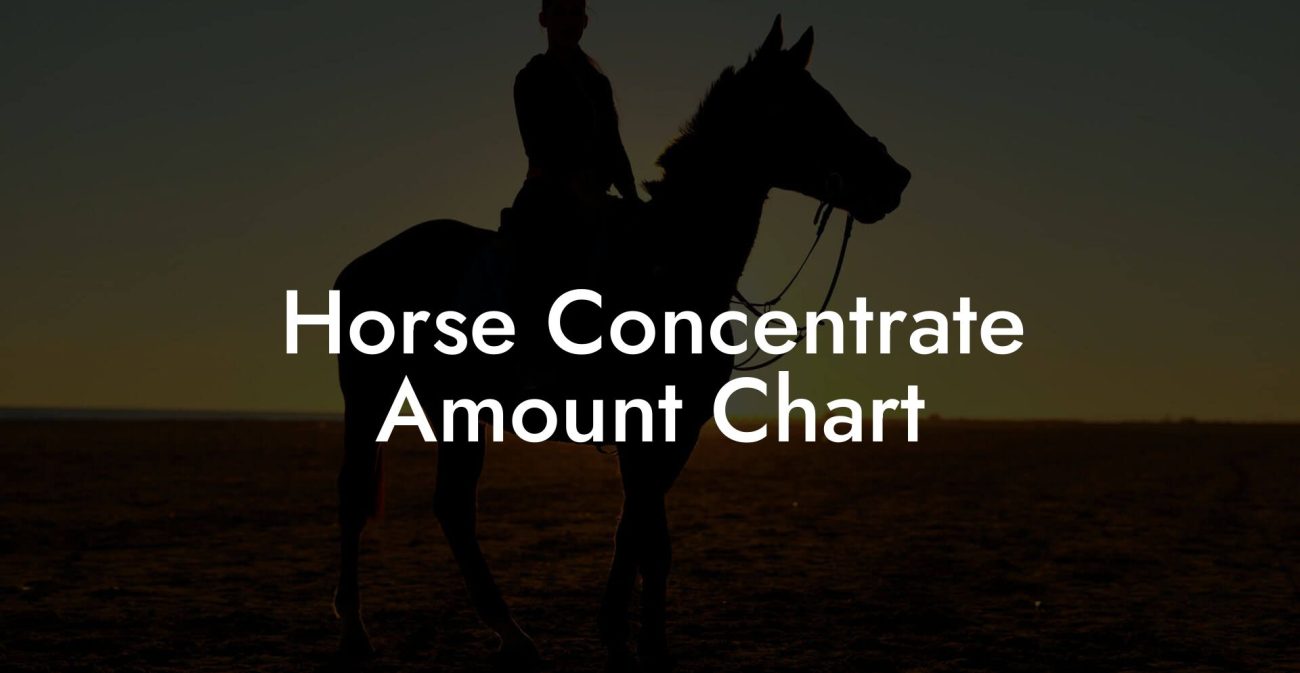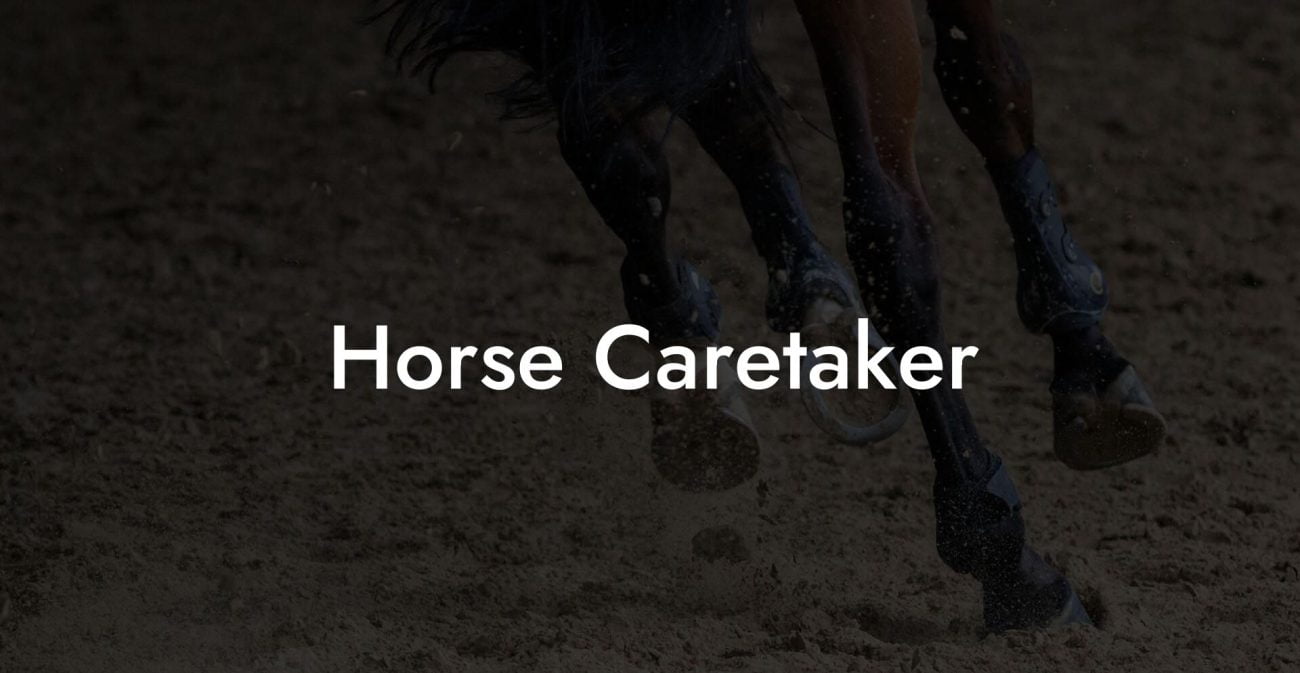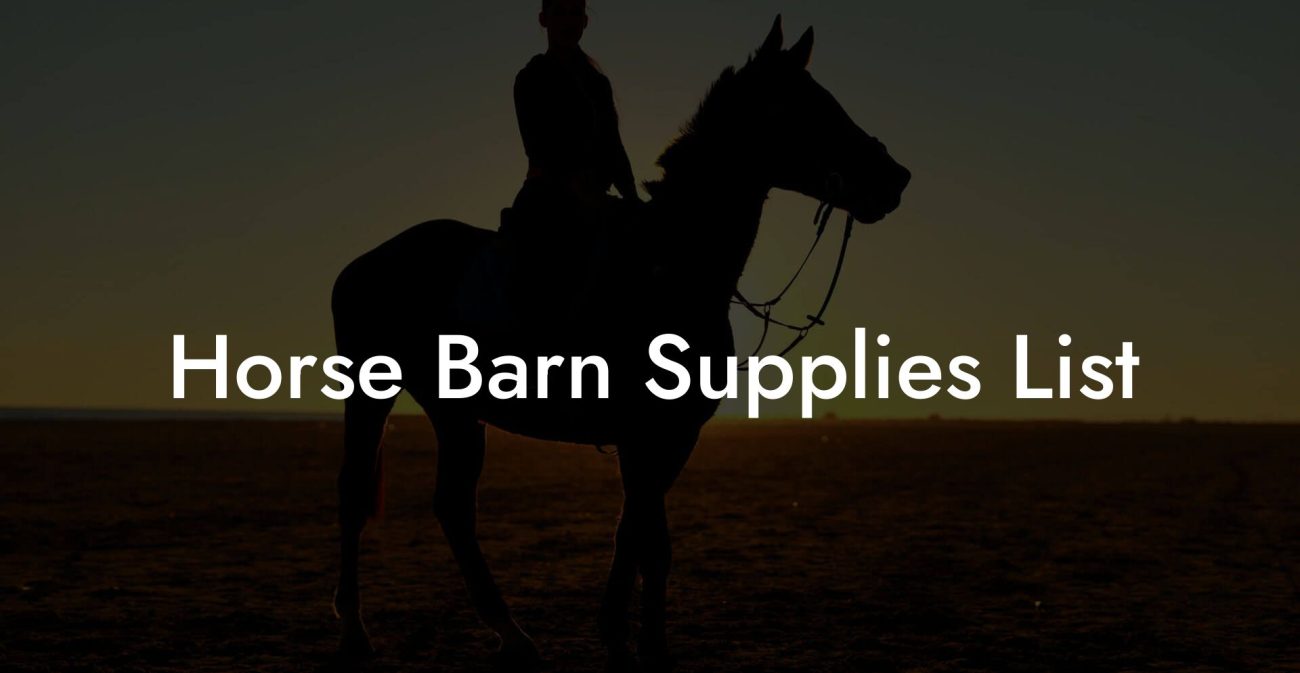Ever wondered why your horse seems to head straight for the water bucket like it’s the latest TikTok trend? You’re not alone. In the world of equine care, understanding the ins and outs of horse hydration is as essential as knowing which filter to use on your latest Instagram post. Whether you're a millennial horse enthusiast or part of the Gen-Z stable squad, this deep dive into “How Often Do Horses Go To Water” will quench your thirst for knowledge, minus the dehydration drama.
Quick Links to Useful Sections
- Understanding Your Horse's Hydration Needs
- Factors Affecting Equine Water Consumption
- How Often Should Horses Drink? A Comprehensive Guide
- Baseline Hydration
- Activity and Workload Impact
- Seasonal Variations
- Health and Behavioral Observations
- Practical Tips to Ensure Your Horse's Water Needs Are Met
- 1. Regular Water Checks
- 2. Temperature Control
- 3. Adequate Access
- 4. Monitor Environmental Changes
- 5. Incorporate Electrolytes
- Equine Hydration in Varying Conditions: Beyond the Basics
- Hot and Humid Weather
- Cold Weather Challenges
- After Intensive Exercise
- During Illness or Recovery
- Case Studies: Real-Life Examples of Equine Hydration Mastery
- Case Study 1: Racing to Success
- Case Study 2: The Backyard Barnyard Revelation
- Case Study 3: Recovery Redefined
- Integrating Technology into Equine Hydration Management
- Smart Watering Systems
- Wearable Health Monitors
- Mobile Applications
- Resources and Community Support: Your Next Steps
- Frequently Asked Questions About Equine Hydration
- Navigating the Future of Equine Hydration
Understanding Your Horse's Hydration Needs
When it comes to horse care, water isn’t just a beverage, it’s pure performance fuel. Horses, like us, need water to keep their engines running smoothly. But unlike humans who might opt for a craft soda, these majestic creatures have very specific hydration needs that depend on size, activity level, diet, and even the weather.
At its core, equine hydration is about balance. Too little water can lead to dehydration, sluggish performance, and even colic, a condition that no horse owner wants to face. On the flip side, providing ample access to fresh, clean water supports healthy digestion, joint lubrication, and, yes, that sparkle in your horse’s eyes.
In this section, we’re diving into the science behind how much water your horse should be guzzling and why it matters. Expect a mix of research insights, practical guidelines, and tips that even the savviest equine influencers would envy.
Factors Affecting Equine Water Consumption
Not all horses are created equal when it comes to water needs. Several factors play into just how often, and how much, your horse will hit the water trough. Let’s break it down:
- Body Size and Weight: Larger horses naturally require more water than their smaller counterparts. Think of it as space, more area to fill up.
- Activity Level: Horses that are active, whether they’re racing, trail riding, or simply trotting around, lose water much faster through sweating. More sweat means more hydration needed to replace lost fluids.
- Diet and Feed: High-fiber diets, especially those heavy in hay, can actually increase water needs due to the fiber’s thirst-inducing effects. Pasture-fed horses, on the other hand, might sip less frequently since fresh grass has a higher water content.
- Environmental Conditions: Heat, humidity, and even the wind can raise the water requirements. A thirsty horse in a sweltering summer is like a phone with a low battery, it won’t last long without a recharge.
- health and Age: Young, growing horses and older horses with health challenges may have different hydration requirements. Keep an eye on their drinking habits as part of their overall wellness check.
By understanding these variables, you can better tailor your watering routine to match your horse’s unique needs. The key takeaway? A one-size-fits-all approach just won’t cut it.
How Often Should Horses Drink? A Comprehensive Guide
So, how often do horses go to water? Well, the answer isn’t as simple as “every couple of hours” or “on demand.” Rather, it’s an interplay of several factors that shape their water consumption patterns. On average, a horse might drink anywhere from 5 to 10 gallons (roughly 19 to 38 liters) of water per day. But let’s break that down further.
Baseline Hydration
For a typical adult horse at rest in comfortable, moderate weather, the baseline is often around 5 to 6 gallons per day. This baseline ensures that the basic bodily functions, digestion, circulation, and temperature regulation, are properly supported.
Activity and Workload Impact
When the workout intensifies, so does the need for H2O. During strenuous exercise or prolonged periods of activity, horses can easily exceed the average, sometimes needing 2 to 3 times their baseline consumption as they try to offset the water lost through sweat.
Equine athletes, like those competing in races or long-distance endurance events, are closely monitored for hydration. Trainers often adjust water availability and sometimes even incorporate electrolyte solutions to maintain the balance of fluids and minerals.
Seasonal Variations
Summer brings heat and increased water needs, while cooler months might see a dip in how frequently your horse visits the water trough. However, even winter-hardy horses require consistent water access, preferably unfrozen, to keep everything running smoothly.
Health and Behavioral Observations
Regular observation is key. A horse that isn’t drinking enough might show signs of discomfort, exhibit dry gums, or have a noticeable drop in performance. On the other hand, a sudden spike in water consumption could indicate underlying health issues that deserve a vet’s attention.
In short, while the “ideal” drinking frequency can vary, keeping a close eye on your horse’s behavior and environmental conditions will help ensure they are properly hydrated.
Practical Tips to Ensure Your Horse's Water Needs Are Met
Now that we’ve covered the science, let’s chat about practical, user-friendly strategies to keep your horse’s water game strong.
1. Regular Water Checks
Make it a habit to check your horse’s water trough or bucket several times a day. Clean water is essential, and if it’s left sitting out too long, it can become a breeding ground for bacteria.
2. Temperature Control
Invest in water buckets or troughs that maintain water temperature. During summer, cool water is preferable, while in winter, heated buckets can prevent water from freezing.
3. Adequate Access
Make sure your horse has constant access to water, especially if they’re grazing in pastures far from the barn. Portable water tanks or automatically filling troughs can be lifesavers.
4. Monitor Environmental Changes
Adjust water availability based on seasonal shifts. On scorching days, don’t be surprised if your horse makes extra trips for a drink. Similarly, during cooler months, check that your water sources aren’t frozen over.
5. Incorporate Electrolytes
Post-exercise hydration can often be boosted by adding electrolytes to the water. This helps replenish salts lost during hard work, much like how you might enhance your recovery drink after a workout.
With these actionable tips, you can proactively support your horse’s hydration, ensuring that they’re always in peak performance mode!
Equine Hydration in Varying Conditions: Beyond the Basics
The world of equine care is never black-and-white, and water intake is no exception. Different conditions demand different hydration strategies.
Hot and Humid Weather
When the sun is blazing, and humidity is high, your horse will be losing more water through sweat. This is the time to amp up the water availability. Think of it like increasing the charging rate of your smartphone on a long day out.
A combination of cool, fresh water and periodically adding a pinch of salt or an electrolyte mix can be especially beneficial in these conditions.
Cold Weather Challenges
Winter care for horses involves a unique set of challenges. Water sources can freeze, and horses may be less inclined to drink if the water is chilly. Heated buckets and insulated water tanks become indispensable during these months. In addition, adding a little bit of salt can help lower the freezing point, ensuring that the water remains accessible.
After Intensive Exercise
After a rigorous training session, your horse’s body craves hydration to recover lost fluids and electrolytes. This isn’t just about quenching thirst, adequate hydration helps prevent post-exercise issues like muscle stiffness and fatigue.
Many trainers now recommend incorporating recovery water strategies that blend plain water with specially designed electrolyte solutions.
During Illness or Recovery
Whether your horse is under the weather or bouncing back from an injury, hydration is a crucial element of the healing process. Immune function and toxin elimination are significantly improved with proper water intake. Keep a closer watch during these times, and consult with your vet if you notice any changes in drinking habits.
Tailoring your hydration strategy based on the circumstances not only keeps your horse healthy but also ensures that every sip contributes to faster recovery and sustained performance.
Case Studies: Real-Life Examples of Equine Hydration Mastery
Real-life experiences speak louder than any textbook recommendation. Here are some eye-opening case studies that highlight how attention to hydration transformed the performance and health of horses.
Case Study 1: Racing to Success
Meet Bella, a spirited thoroughbred whose training regimen was hindered by unpredictable water consumption. Her trainer noticed that on particularly hot days, Bella would show signs of sluggishness and even minor colic symptoms. By installing an automatic, temperature-regulated water trough and incorporating electrolyte blends post-race, Bella’s performance improved dramatically. Regular monitoring and immediate adjustments helped her understand her water needs better, resulting in fewer health concerns and more podium finishes.
Case Study 2: The Backyard Barnyard Revelation
Then there’s Duke, a gentle quarter horse living in a modest pasture. Duke’s owner thought that leaving a bucket out was enough until they noticed Duke making extra trips for a drink during mid-afternoon heat waves. After a strategic upgrade to a portable water tank with a built-in heater for winter use, Duke’s energy levels soared, and the subtle signs of dehydration were completely eliminated. His case is a classic reminder that even in smaller, seemingly simpler stables, proactive hydration management can make all the difference.
Case Study 3: Recovery Redefined
Recovery is a critical stage for any injured horse. Rocky, an older gelding recovering from surgery, required extra care when it came to hydration. His caretakers observed that an increased water intake helped ease muscle stiffness and facilitated smoother digestion. They complemented his care routine with specialized water supplements and periodic health checks, ensuring that every drop of water played its part in his recovery journey.
These stories illustrate that whether in high-performance racing or gentle pasture life, strategic attention to water intake is a game changer.
Integrating Technology into Equine Hydration Management
In our digitally-driven age, why should horses miss out on innovations? Modern technology now plays a key role in monitoring and managing equine hydration, providing data-driven insights to ensure every horse is hydrated like a pro.
Smart Watering Systems
Automatic watering systems equipped with sensors can alert you when a trough is running low, or even better, adjust the water flow based on weather conditions. These systems make sure that whether your horse is in a remote pasture or a busy stable, they always have access to fresh, cool water.
Wearable Health Monitors
Just as fitness trackers are a hit among Gen-Z and millennials, equine health monitors are gaining traction. These wearable devices track your horse’s activity, heart rate, and even hydration levels. They provide vital clues about your horse’s overall well-being, and can even signal early signs of dehydration before it becomes a problem.
Mobile Applications
Integrated mobile apps now allow you to track water consumption, set routine reminders, and log behavioral changes. With a few taps, you can adjust hydration strategies in real time, making you a tech-savvy caretaker who leaves no drop behind.
Utilizing these technological tools can bridge the gap between traditional equine care and modern management practices, making hydration monitoring both efficient and precise.
Resources and Community Support: Your Next Steps
Diving into equine hydration isn’t a solo journey. Around the globe, countless resources and vibrant communities exist, ready to support you in mastering how often and how effectively horses should drink water.
Consider joining online forums where experienced breeders, trainers, and equine veterinarians share their insights. Social media groups and YouTube channels dedicated to horse care can also provide real-time advice and innovative ideas, from DIY water trough modifications to advanced hydration tracking methods.
Additionally, keep an eye on new research publications and equine health blogs; the field is continually evolving. From webinars to local workshops, every resource you tap into adds to your reservoir of knowledge, ensuring that you and your horse remain ahead of the curve.
Your journey to mastering equine hydration is just as much about connecting with others as it is about the science. Don’t hesitate to reach out, ask questions, and share your own experiences. After all, every drop of knowledge makes a splash in the world of horse care!
Frequently Asked Questions About Equine Hydration
Here are some of the burning questions we hear about horse hydration, answered in a straightforward, no-fluff style.
1. How much water should my horse drink daily?
Typically, a horse will drink between 5 and 10 gallons (19 to 38 liters) of water per day. However, the exact amount depends on factors like body size, activity level, and environmental conditions.
2. Does weather significantly impact water consumption?
Yes, indeed. During hot and humid weather, horses may need significantly more water, while colder temperatures might reduce water intake. Adjust your strategy accordingly.
3. Can I rely solely on a water bucket for my horse’s hydration?
While a water bucket is a common solution, ensuring that your horse has constant access to clean, fresh water, through automatic systems or additional troughs, is highly recommended.
4. What are the signs of dehydration in horses?
Signs include dry gums, lethargy, reduced appetite, and a decrease in water consumption. Regular observation and monitoring are key to early detection.
5. How does exercise affect a horse’s water needs?
Exercise increases water loss through sweat. Thus, post-exercise hydration, sometimes supplemented with electrolytes, is essential to help your horse recover.
6. Are there technologies available to monitor hydration?
Absolutely. Wearable monitors, smart watering systems, and mobile apps offer real-time tracking and alert you to any irregularities in water consumption.
7. Can diet influence how much water my horse drinks?
Yes, horses on high-fiber diets may need more water due to the thirst-inducing effects of hay, while pasture-fed horses might naturally consume less if the grass offers additional moisture.
8. What should I do if my horse isn’t drinking as much as usual?
First, check the water source for cleanliness and accessibility. If the issue persists, consult your veterinarian to rule out health problems.
9. Is it okay to add electrolytes to my horse’s water?
Yes, especially after exercise or during hot weather. Electrolytes can help replace essential minerals lost through sweat.
10. How can I make drinking water more appealing to my horse?
Ensure the water is fresh, clean, and maintained at an optimal temperature. Automatically refreshed water sources and the addition of safe flavor enhancers can sometimes encourage more frequent drinking.
Navigating the Future of Equine Hydration
Embracing an informed, flexible approach to equine hydration is not just about preventing dehydration, it’s about elevating the overall health, performance, and longevity of your horse. As we’ve seen, the question of “How Often Do Horses Go To Water” demands a nuanced answer that adapts to individual needs and environmental conditions.
From harnessing smart technology to employing time-tested strategies for regular water checks and temperature maintenance, every step you take contributes to creating an environment where your horse can thrive. Embrace the journey of constant learning and adjustment, after all, even the most seasoned equine caretakers are always discovering new hydration hacks that push the boundaries of horse care.
The future of equine hydration is bright, innovative, and deeply connected to the well-being of our four-legged friends. Every sip is a step toward improved health, streamlined performance, and a happier, more vibrant life for your horse. So, keep those buckets filled, monitor closely, and continue exploring new ways to quench your horse’s thirst for life.
Remember, being a modern horse caretaker is all about blending tradition with innovation. Whether you’re using cutting-edge monitoring devices or relying on tried-and-tested routines, your horse’s hydration is in the spotlight, making your role as a caregiver truly impactful.

